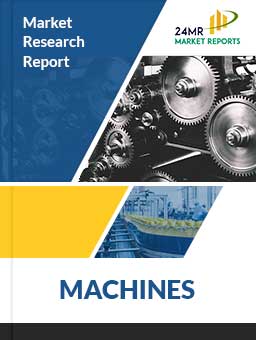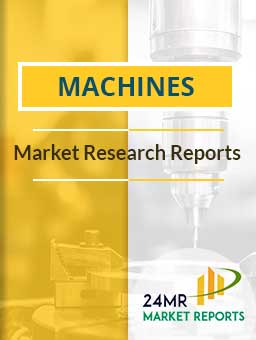
COMPANIES COVERED
AndritzDownload FREE Report Sample
Download Free sampleMarket Size
The global Small Hydro Turbine Runner market was valued at USD 2542.80 million in 2023 and is expected to grow at a CAGR of 3.40% from 2023 to 2032. This growth is projected to lead the market to reach USD 3435.56 million by 2032.
The Small Hydro Turbine Runner market is a specialized segment within the renewable energy industry, focused on turbines used in small-scale hydropower generation. A turbine runner is the core component of any hydropower turbine that converts the kinetic energy of flowing water into mechanical energy, which is then used to generate electricity. Small hydropower plants, which typically have a capacity of up to 10 megawatts (MW), often use runners made from durable materials to ensure longevity and efficient performance.
There are different types of turbine runners used in hydropower plants, including Francis, Kaplan, and Pelton turbines, each designed for specific water flow conditions. The Francis turbine is used in medium head, high-flow applications, the Kaplan turbine is typically used in low-head, high-flow scenarios, and the Pelton turbine is used in high-head, low-flow environments. These turbine runners are critical components for the success of small-scale hydropower plants, which provide renewable, clean energy in a sustainable manner.
The global market for small hydro turbine runners is driven by increasing demand for renewable energy solutions, particularly in regions with access to river systems or water flows that make small hydropower generation feasible. These systems are especially valuable in off-grid locations, providing localized electricity generation while reducing reliance on fossil fuels.
The small hydro turbine runner market is expected to continue its upward trajectory due to several factors:
Rising demand for renewable energy: Governments around the world are prioritizing the use of renewable energy sources, including small-scale hydropower, to meet sustainability and carbon reduction goals.
To know more about market statistics, Download a FREE Sample copy
Technological advancements: Ongoing innovations in turbine design and materials are improving the efficiency and durability of small hydro systems, driving the market forward.
Increased investment in infrastructure: More investments are being made in renewable energy infrastructure, particularly in regions with abundant water resources but limited access to large-scale hydropower.
In addition to these trends, the growing number of governmental incentives and favorable policies supporting small hydropower projects are also key contributors to the market's expansion.
Government Support for Renewable Energy Governments globally are encouraging the adoption of renewable energy technologies to meet climate goals and reduce reliance on fossil fuels. Financial incentives, grants, and favorable policies are making it easier for both public and private entities to invest in small hydropower projects, including the procurement of turbine runners.
Technological Advancements in Turbine Design Innovations in turbine design and material science are driving the development of more efficient and durable turbine runners. These advancements allow small hydropower plants to operate at higher efficiency levels, providing a significant boost to the small hydro turbine runner market.
Energy Security and Rural Electrification Small hydropower systems can play a crucial role in rural electrification, especially in remote areas with limited access to a national power grid. Small hydro turbines provide a local, sustainable solution to energy needs, contributing to energy security while reducing environmental impact.
Sustainability Trends With increasing emphasis on environmental sustainability, small hydro projects are viewed as a clean energy solution that produces minimal environmental impact compared to large-scale hydroelectric projects. This is attracting investments and accelerating the growth of the small hydro turbine runner market.
Environmental Impact and Regulatory Hurdles While small hydropower plants are considered environmentally friendly, they still face regulatory challenges related to water use, fish migration, and ecosystem disruption. Some regions have strict regulations, making it more difficult to develop new hydropower plants, potentially limiting market growth.
High Initial Investment The high initial cost of setting up small hydropower plants, including the turbine runner system, can be a barrier to entry, particularly in developing countries. While the long-term operational costs are low, the upfront investment required for infrastructure can deter potential investors.
Competition from Other Renewable Energy Sources Although small hydropower is a viable renewable energy source, it competes with other renewable technologies such as solar and wind energy, which have lower installation costs and can be deployed in a wider range of locations. This competition may slow the growth of the small hydro turbine runner market.
Emerging Markets for Hydropower Developing regions, particularly in Africa and Asia, have vast untapped hydropower potential. Governments in these regions are beginning to realize the benefits of small hydropower projects and are likely to invest heavily in infrastructure, presenting opportunities for manufacturers of turbine runners.
Increasing Demand for Off-Grid Solutions The demand for off-grid renewable energy solutions is expected to rise, especially in areas where grid connection is expensive or impractical. Small hydropower, supported by efficient turbine runners, can provide a reliable source of energy in these regions.
Advances in Turbine Efficiency Ongoing research into turbine efficiency can result in even more optimized small hydropower solutions, enabling turbine runners to operate more effectively in challenging conditions. This could unlock new markets and applications for small hydro turbines.
Water Resource Availability Small hydropower projects depend on a reliable source of water, such as rivers or streams, for energy generation. In regions experiencing droughts or changes in water patterns due to climate change, the viability of small hydropower projects may be impacted.
Maintenance and Operational Challenges Although small hydropower systems generally have lower maintenance needs than large-scale plants, turbine runners still require regular maintenance to ensure optimal performance. These maintenance tasks can become a challenge in remote or difficult-to-reach areas.
North America, especially the United States and Canada, has a growing market for small hydro turbines, with a focus on rural electrification and energy independence. Many small hydro projects are being developed in mountainous regions, where water resources are abundant.
Europe is a key market for small hydropower, driven by the EU's focus on renewable energy goals. Countries such as Norway, Austria, and Switzerland already have well-established small hydropower systems, and the region is expected to see continued growth in turbine runner adoption.
The Asia-Pacific region, particularly countries like China, India, and Indonesia, holds significant potential for small hydropower projects. These countries are increasingly investing in renewable energy to meet their growing energy demands while reducing their reliance on fossil fuels.
Countries in Latin America, such as Brazil and Chile, are focusing on renewable energy to meet their energy needs, with small hydropower projects seeing a rise in popularity. The availability of water resources in the region offers a strong foundation for the growth of the small hydro turbine runner market.
In the Middle East & Africa, small hydropower is a relatively untapped resource. However, countries like Ethiopia and Kenya are investing in renewable energy infrastructure, which could drive demand for small hydro turbine runners in the coming years.
The global small hydro turbine runner market is competitive, with key players offering a variety of turbine runner designs for different hydropower applications. Leading companies in the market include:
Andritz Hydro: A global leader in hydropower equipment, offering a wide range of turbine runners for small hydropower plants.
Voith Hydro: Known for its advanced turbine runner technology and strong presence in the small hydro market.
GE Renewable Energy: A major player providing turbine runners for both large-scale and small-scale hydropower applications.
Siemens Gamesa: While better known for wind energy, Siemens Gamesa is also involved in small hydropower, offering efficient turbine runners.
Small Hydro Turbine Runner Market provides a deep insight into the global Small Hydro Turbine Runner market, covering all its essential aspects. This ranges from a macro overview of the market to micro details of the market size, competitive landscape, development trend, niche market, key market drivers and challenges, SWOT analysis, value chain analysis, etc.
The analysis helps the reader to shape the competition within the industries and strategies for the competitive environment to enhance the potential profit. Furthermore, it provides a simple framework for evaluating and assessing the position of the business organization. The report structure also focuses on the competitive landscape of the Global Small Hydro Turbine Runner. Small Hydro Turbine Runner Market introduces in detail the market share, market performance, product situation, operation situation, etc., of the main players, which helps the readers in the industry to identify the main competitors and deeply understand the competition pattern of the market.
In a word, Small Hydro Turbine Runner Market is a must-read for industry players, investors, researchers, consultants, business strategists, and all those who have any kind of stake or are planning to foray into the Small Hydro Turbine Runner market.
Rural Electrification
Energy Production in Remote Areas
Water Resource Management
Energy Storage Integration
Francis Turbine Runners
Kaplan Turbine Runners
Pelton Turbine Runners
Andritz Hydro
Voith Hydro
GE Renewable Energy
Siemens Gamesa
North America
Europe
Asia-Pacific
Latin America
Middle East & Africa
1.What is the current market size of the Small Hydro Turbine Runner market?
The Small Hydro Turbine Runner market was valued at USD 2542.80 million in 2023 and is expected to reach USD 3435.56 million by 2032, growing at a CAGR of 3.40%.
2.Which are the key companies operating in the Small Hydro Turbine Runner market?
Major players include Andritz Hydro, Voith Hydro, GE Renewable Energy, and Siemens Gamesa.
3.What are the key growth drivers in the Small Hydro Turbine Runner market?
Growth drivers include government incentives for renewable energy, technological advancements in turbine design, and an increasing demand for off-grid renewable energy solutions.
4.Which regions dominate the Small Hydro Turbine Runner market?
Europe, North America, and Asia-Pacific are the leading regions in the small hydro turbine runner market.
5.What are the emerging trends in the Small Hydro Turbine Runner market?
Emerging trends include technological innovations in turbine efficiency, increased demand for off-grid solutions, and rural electrification efforts in developing regions.

Speak to our Custom Research Team and get the Custom Research in a budget
Custom ResearchFrequently Asked Questions ?
A license granted to one user. Rules or conditions might be applied for e.g. the use of electric files (PDFs) or printings, depending on product.
A license granted to multiple users.
A license granted to a single business site/establishment.
A license granted to all employees within organisation access to the product.
Upto Working 24 to 48 hrs
Upto 72 hrs max - Weekends and Public Holidays
Online Payments with PayPal and CCavenue
Wire Transfer/Bank Transfer
Hard Copy




 Industry Market Size
Industry Market Size SWOT Analysis
SWOT Analysis Industry Major Players
Industry Major Players Revenue Forecasts
Revenue Forecasts Historical and Forecast Growth
Historical and Forecast Growth Profitability Analysis
Profitability Analysis
























